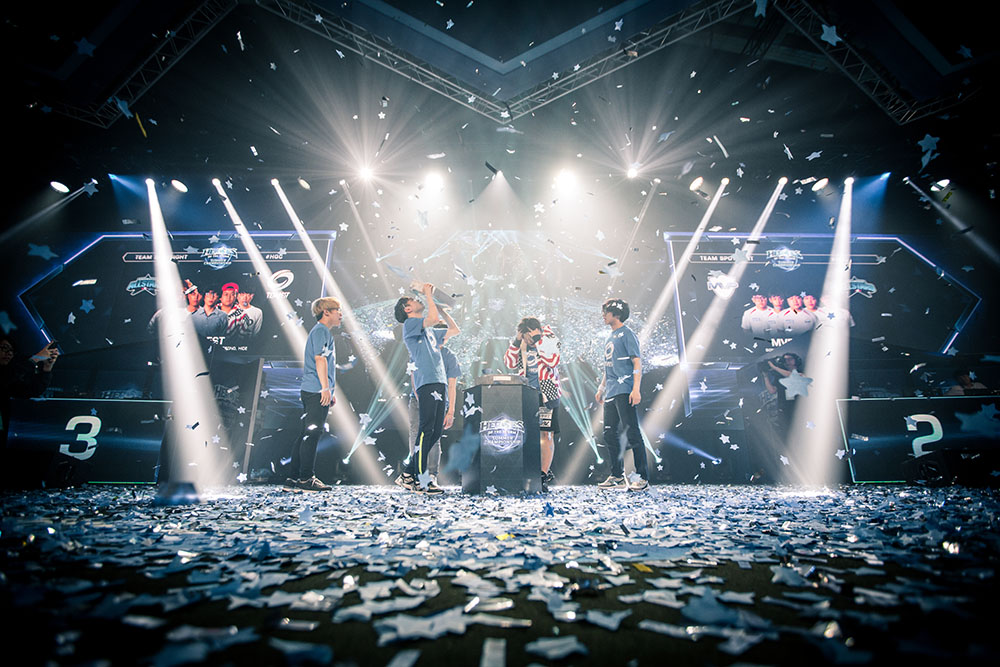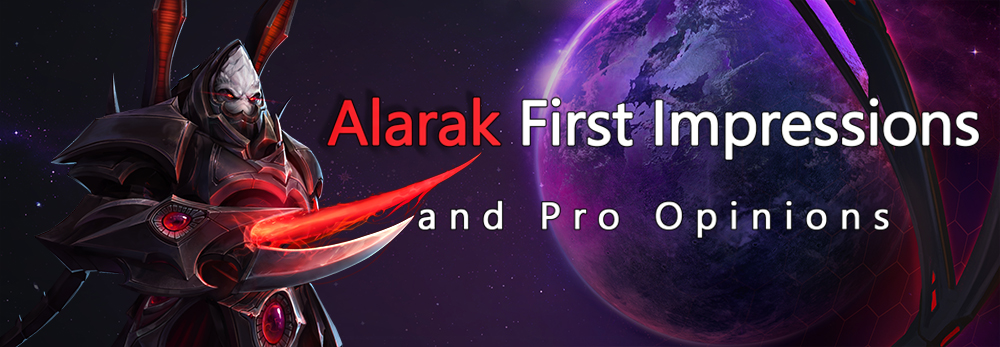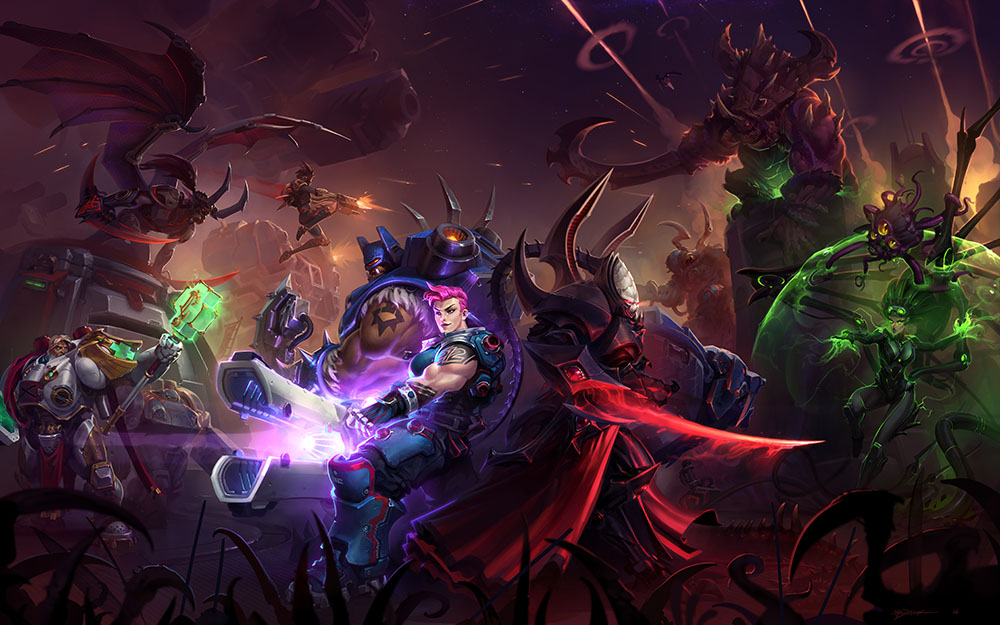Road to BlizzCon: A Team Reborn

Written by: EsportsJohn
Table of Contents
Hailing from down under, the Australian boys are back in action. After disbanding and undergoing various roster changes, the majority of former Negative Synergy members have reformed under the new moniker Reborn for their third Global Championship appearance—and this time, they’re looking stronger than ever.
Origins
The story starts in mid 2015 with robadobah, just after Heroes of the Storm was released. Team Immunity was the biggest name in Australia-New Zealand (ANZ) esports and eventually fostered two rosters: White and Black. At the time, robadobah played on White while Daspurtz played opposite of him on Black. White blazed through the 2015 Road to BlizzCon qualifiers but were stopped short at the Americas Championship. Nonetheless, robadobah was not deterred; he had tasted the international stage and was thirsty for more.
During the post-BlizzCon lull, robadobah and current teammate Sashin set out to create the ANZ “Dream Team” by collecting all of the best players under one banner. They first scooped up Daspurtz, who had briefly retired after Immunity Black’s loss in the BlizzCon qualifiers. Then the other big name in the region Exile5 suddenly disbanded and left two of the best flex players, Benjamin94 and Ninja, teamless and ripe for the picking. When the dust settled, robadobah had fulfilled his goal of gathering together the best of the best.
“The very first night that we scrimmed with our team line up, we lived up to our name Negative Synergy and we fought and disagreed with everything ;p. But we stuck it out and managed to make it to both Spring and Summer Championships.”
-Benjamin94
Things didn’t go so smoothly at first—Benjamin comments that the first time they played together they “fought and disagreed with everything”—but the team quickly began to pick up momentum. Half a year later, Negative Synergy had almost effortlessly decimated all other competition in ANZ and landed themselves on the global stage twice.
Negative Synergy’s 2016 Run and Reformation
During the Spring Season, Negative Synergy breezed through the regional qualifiers with an overall record of 15-1. However, their dominance did not translate as well to the global stage. They failed to make it out of the First Group Stage with a record of 2-4 at the Spring Global Championship in Seoul, South Korea. They had a strong showing against Filipino team Renovatio I but got smashed by EDward Gaming and Team Naventic at their primes. This wasn’t an unusual trend—none of the minor regions could take games off of major regions, but it was disappointing nonetheless.

Summer Season went even worse. Despite going completely undefeated in the regional qualifiers, cracks began to form in the Negative Synergy roster. “It was quite obvious…in their Sweden performance—noticeably worse than their results in Korea,” commented Reborn flex player Arcaner. At the Global Championship, they played reckless, sloppy games against X-Team and Renovatio I and got knocked out of the group stage 1-4. After such a poor showing, it was clear that some changes needed to be made.
“Basically, like any esports team, Negative Synergy had been having some internal issues throughout the entire summer season of HotS…so after the team returned from Sweden, everyone sort of parted ways and essentially became free agents. Negative Synergy didn’t exist at that point and forward into the next few weeks.”
-Arcaner
The team split completely after coming back from the Summer Global Championship, creating a little Rosterpocalypse in ANZ. Several new teams developed around the former members of Negative Synergy, including one centered around robadobah, Sashin, and top flex player Arcaner. Nonetheless, nothing seemed to hold firm. Most of the teams had disappointing performances in King of the Hill regional tournaments, and the former Negative Synergy teammates began to gravitate back together.
In the end, everyone except Sashin (robadobah, ninja, Benjamin94, and Daspurtz) ended up back together. The team tried out Arcaner for the flex role, and he proved to be more than capable of filling Sashin’s shoes. Despite playing Assassins on previous teams, Arcaner admitted that he had interest in other roles too: “My main and favourite role whenever I’m a free agent is support…I can cover a lot of Heroes haha.” The team also assumed a new name—The Boys—to commemorate their group camaraderie.
“Brainstorming a team name always presents itself with dead ends haha. It’s not something we are talented at so we just latched on to what we thought represented the team’s atmosphere. We ended up having to change [The Boys] to Reborn so we would suffice as a professional HotS team. ‘The Boys’ was a bit too casual.”
-Arcaner
Over the next few weeks, The Boys took regional tournaments by storm and looked just as strong, if not stronger, than the original Negative Synergy. After the Road the Finals qualifiers were announced, The Boys decided to change their name to Reborn for a more “professional”—and at the same time, very fitting—title. Sashin began rebuilding Negative Synergy with a new roster as well, and soon the two teams would become rivals in the scene.
The Road to Finals qualifier was a fairly straightforward affair for Reborn. They dropped only a single game (to Negative Synergy) before coming face to face with their rivals again in the finals. It was a decent fight, but the sheer mechanical strength of Reborn’s roster overpowered the revamped Negative Synergy and catapulted the two-time world contenders back onto the global stage yet again.
Player Profiles
robadobah

On the tank role, Robert “robadobah” Purling is a rock for the team to anchor onto. He’s the soul of the team and often lends the voice of reason to keep his teammate’s aggression in check. If the team begins to falter, it’s robadobah’s words that keep them calm and collected.
He tends toward a more cautious and opportunistic approach to teamfights but isn’t afraid to dive in deep if necessary. Like many of the other players on Reborn, he has a very flexible Hero pool. His choice, from the steadfast presence of Johanna to the engagement potential of Anub’arak, sets the pace for the team to follow.
Benjamin94

If robadobah is a rock, then Benjamin “Benjamin94” Vinante-Davies is the glue that holds everything together. He’s the team leader both in and out of the game, guiding them to victory. Though Reborn doesn’t have a designated shotcaller, many of the players point to him as the decision maker for the team.
Benjamin didn’t have as much success in 2015 as some of the other players, but his insane flexibility finally came to fruition and was appreciated on Negative Synergy. He typically plays the role of a secondary tank or melee Assassin on Reborn, but his huge Hero pool gives him room to adapt to literally any composition. He plays a terrifying Kerrigan but he’s not afraid to break out more elastic characters like Tassadar or Sylvanas to fill in any gaps.
Daspurtz

Photo Credit: DreamHack
The back line is held together by Zac “Daspurtz” Peters on the support role. In the ANZ region, he is often lauded as the best support player by far. Though the team plays rather defensively, it’s Daspurtz’s expert positioning and meticulous timing on his abilities that wins teamfights.
Like many support players, it’s hard to nail down a signature Hero for Daspurtz. He’s good on Uther, he’s good on Rehgar, he’s good on Brightwing, even Auriel. There’s nothing he’s particularly bad at—he just plays them all, and he does so with a high level of precision and patience.
Arcaner

In lieu of Sashin, Liam “Arcaner” Simpson has been an apt replacement—even an improvement—in terms of team synergy. He doesn’t have the same unbridled aggression, but his quirky playstyle and offbeat attacks set him apart from the more relaxed, laid back attitude of his teammates.
Arcaner’s fingers are quick and his mind is sharp; as such, he can flex a huge variety of roles within the span of a single series. On his previous teams (Fresh and Gust in 5), he typically played the team’s Assassin, but he admits that his preference goes toward supports. He’s comfortable on many impact Heroes including Zagara, Illidan, and Tracer, but he doesn’t mind taking the backseat and allowing Ninja or Benjamin to take the lead either.
Ninja

The most peculiar cog in Reborn’s machine is ranged player Shane “Ninja” Ellem. His focus on the macro game and wave management does wonders for nabbing the incremental advantage for his team and makes his playstyle unique. It’s like he plays the same way as every other ranged carry, but with a completely different mindset.
He’s best known for his outstanding Falstad play. Falstad’s global presence plays into his strengths and allows him to control the pace of the game; on top of that, he almost never uses Gust foolishly. Recently, he also unveiled a creative Medivh pick which has turned some heads, so that will be something to look out for.
Playstyle
For the reformed roster, unity is the most important thing. “I think what is special about Reborn is we are based upon friendship,” said Arcaner about the team. “[We’re] [j]ust a team of great mechanical players who all get along and enjoy each other’s company especially outside of scrims and team practice,” he added.
In a conversation with well-known ANZ caster Disconcur, he agreed and noted the long-running bonds that have held the team together for almost two full years. Whatever may happen at BlizzCon, Reborn’s roster is one of the most cohesive in the world and will stay cool under pressure.
Overall, the team’s playstyle can be considered defensive or passive with a focus on small, marginal advantages. They’re unlikely to rush into fights for the sake of fighting, and they’re more than willing to let an objective or a structure go in order to trade for a greater advantage. But that doesn’t mean they don’t have the chops to back up their teamfights.
The team as a whole is quite mechanically proficient. Arcaner boasted that they “have a mechanical advantage over quite a few international teams” including NA teams, many of the small regions, and even EU powerhouse Fnatic. However, mechanics aren’t everything.
“But mechanics only get you so far. Our weaknesses is that we barely practice compared to the other regions. We have extensive real life commitments and are weighed down and limited in terms of scrim options and scrim block times in ANZ. The other teams going to BlizzCon will be spamming practice games so they’ll all have an advantage over us in that aspect.”
-Arcaner
Like in other minor regions, the dream of becoming a full-time progamer is a distant one for ANZ players. Money and exposure are hard to come by via gaming, and good practice options are limited by their remote location in the world. “I think we have a few issues with our scrim options, shot calling, macro, etc. The other teams will be spamming practice games, so they’ll all have an advantage over us in that aspect,” laments Arcaner. Despite having the mechanical advantage, Reborn will be fighting an uphill battle against the well-practiced and well-prepared teams at BlizzCon.
Heading Into BlizzCon
Nevertheless, the team remains optimistic. Out of the minor region teams going to BlizzCon, Reborn feels that they are hands down the best. They feel confident against them and believe they even have a strong chance against some of the major regions as well.
There’s no doubt that Korea is the strongest it’s ever been, but many of the other major regions have fallen from grace. Two of North America’s strongest and most consistent teams throughout the year will not be at BlizzCon—though that’s not to say that Murloc Geniuses and Denial eSports won’t represent NA well—and China’s greatest teams, eStar and EDG, have all but splintered into nothing.

Photo Credit: DreamHack
“I think that we are better players than Denial, Murloc Geniuses, Super Perfect Team, the other small regions, and maybe Fnatic,” Arcaner stated proudly. Benjamin is also confident, stating, “[W]e definitely can get a top 8 position if we play as well as I know we can, but also, the bracket will play a major role in that.” Even Disconcur gave his vote of confidence for the ANZ region making it to the top 8, even the top 4. “We were considered the worst region based on the Summer Championship…teams won’t look into our team and learn what we do,” Benjamin added, hinting at a chance to blindside some of the stronger teams. As a whole, the team and the region are confident in their play, but only results will prove them right.
“No one expects us to do anything, so it would just feel great to beat some really good teams from the more advanced regions and really show that, you know, we’re good players.”
There is the drive going all the way back to the Road to BlizzCon 2015 to beat the major regions and prove the ANZ region is a legitimate competitor on the world stage. It was the light that guided robadobah, convinced him to make a “super team”, and held the boys together through a breakup. Now it’s time for Australia to shine.
Huge thanks to Arcaner, Benjamin94, and Disconcur for chatting with me and helping me learn more about the ANZ region. Without them, this article would not be possible!
EsportsJohn is obsessed with The Lizzie Borden Chronicles right now. You can follow him on Twitter or support him on Patreon.






